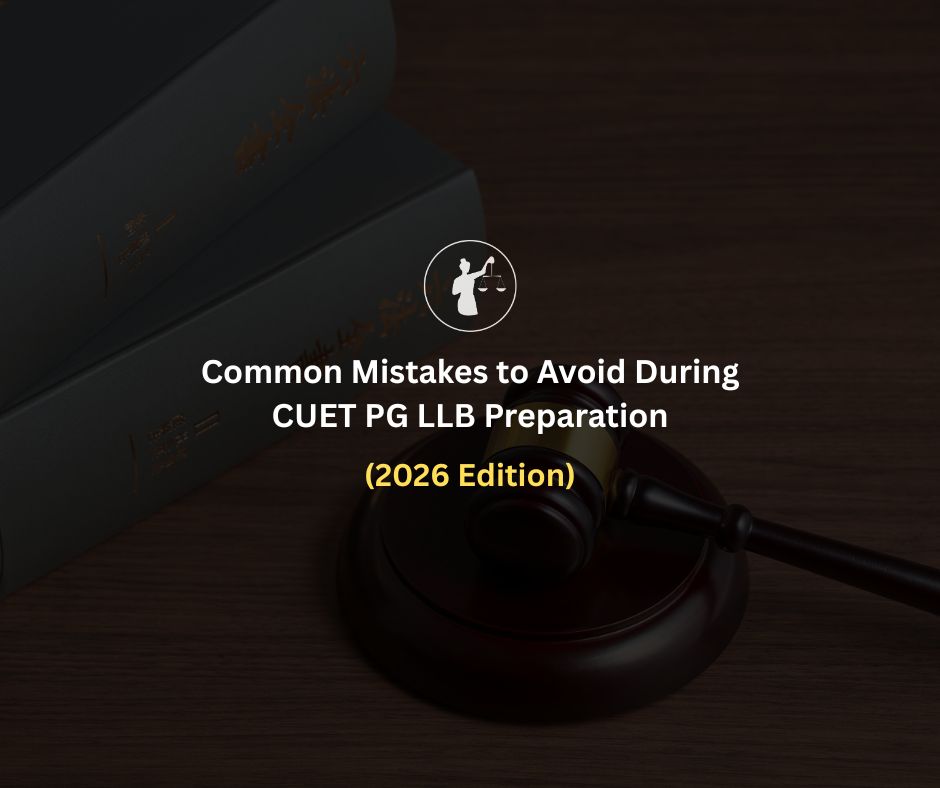
“I knew the answers… just couldn’t solve them in time.”
If you’ve ever walked out of a mock test thinking this, you’re not alone.
Time pressure is the silent killer in CLAT. It’s not that you don’t know the law. Or that your RC skills are weak. It’s that the paper ends before you get the chance to prove it.
And it’s worse when your prep is solid because then, running out of time doesn’t just cost marks. It kills morale.
This blog is not another “make a schedule” guide. It’s a practical breakdown of how toppers manage time inside mocks, when every second counts — and how they train for it outside the mocks.
Also Explore: CLAT Online Coaching: Best Mentorship for CLAT 2026
Most aspirants make the mistake of practicing for accuracy without timing. They solve RCs leisurely. Skim GK when they feel like. Review mocks, but never simulate the pressure of a real test.
Toppers do the opposite.
They know that CLAT 2026 is 120 questions in 120 minutes that’s 1 minute per question, including reading, thinking, and solving.
So their prep is built around speed under pressure, not just raw knowledge.
If you’re constantly running out of time in mocks, do a quick self-check:
Do you start with your strongest section or your favourite one?
Do you solve questions one by one or batch-wise (e.g., read full RC → solve)?
Do you lose track of time during long passages or Legal sets?
They don’t just hope they finish in time. They run drills, adjust based on performance, and review time logs after every mock.
Tip: During analysis, note the timestamp where each section ends. You’ll see patterns in where you’re losing minutes.
One major reason students run out of time is trying to get everything right in one section.
You don’t need a 100% in Legal. You need 80–85% accurately, quickly, and then move.
Toppers understand this trade-off. If one RC passage is too dense, they mark it, skip it, and return if time allows. If GK is tough, they don’t linger — they attempt fast and move.
They never let one section hijack the whole paper.
You can’t expect calm under time if you always practice without it.
Here’s how toppers build internal timers:
Sectional Timed Sets: Solve one RC in exactly 5–6 mins. Do this daily.
GK Flash Rounds: 30 questions in 6 minutes. Do it like a rapid-fire quiz.
Legal Speed Days: Try 3 passages in 25 mins. Don’t pause — push pace.
The idea? Make timed solving your default mode. So that in the mock, your brain doesn’t panic — it performs.
Sometimes, it’s not poor prep — it’s mock-day nerves.
When panic hits, 2 minutes can feel like 10. You blank out, stare at the same question, and time slips away.
Toppers use “time anchors” — checkpoints during mocks:
At 30 mins in, I should be done with English + GK.
At 60 mins, Legal should be wrapped.
At 90 mins, only QT should be left (or all major sections done).
These are soft indicators, not hard rules. But they stop you from drifting aimlessly.
Also: turn off the timer during the mock if it distracts you. Let it ring only at checkpoints.
Yes, we said this blog isn’t about generic time management. But one point matters:
Mocks improve when your prep time is designed for mock-style thinking.
That means:
Don’t read articles like a casual blog. Time your reading: 400–500 words in 3.5–4 minutes.
Don’t solve QT questions while listening to music. Solve 10 under 10 minutes.
Don’t review mocks two days later. Analyze on the same day — while the clock pressure is fresh in memory.
You’re training for performance under time. Every study session should reflect that.
Even if you don’t change your full routine, try these small upgrades:
Pre-decide section order before mocks. No last-minute overthinking.
Flag and skip stuck questions immediately — mark them, return later.
Use shortcut notes: have 1-pager for Legal principles, key GK facts.
Reduce screen clutter: only one tab, one PDF, no notifications.
Toppers win by shaving seconds, not minutes. Seconds matter when 0.25 is at stake.
CLAT 2026 may have fewer questions than before — but that doesn’t mean it’s easier. In fact, fewer questions mean each one matters more.
And here’s the truth: Toppers don’t rush through the paper.
They pace it smartly, let go of perfection, and train under pressure long before the final day.
At NLTI, we build this exact mindset:
Our mocks are designed for real-time tension training — not casual practice.
You get section-wise feedback on time usage, not just ranks.
Our mentors walk you through mock-time psychology, not just right and wrong answers.
Because the real CLAT isn’t about who knows more.
It’s about who can deliver what they know — calmly, quickly, confidently — when the clock is ticking.
Join Our Telegram Page to keep up with the Latest News
Not necessarily. Quality beats quantity. If you're unsure about 15–20 questions, wild guessing can hurt more than help due to negative marking. Many toppers aim for 105–110 smart attempts with high accuracy.
No. Mocks are meant for simulation, not overuse. Instead, solve full mocks 2–3 times a week and use the remaining days for sectional drills under time, which build speed and stamina without burnout.
Yes. Time splits should reflect your strengths. If you consistently finish RC in 18–20 mins, save that buffer for Legal. But don’t over-stretch — try to stay within a 2–3 minute range of standard splits.
Absolutely. Tools like Forest, Pomofocus, or basic stopwatch apps help replicate pressure. During practice sets, try “countdown mode” — not stopwatch so your brain gets used to the feeling of time running out.
Mentally reset. Don’t let one slow section hijack your confidence. Use breathing control (2–3 slow breaths), skip the next tough question quickly, and hit your strength area to regain momentum fast.
Set a hard cap: no more than 8 minutes per passage (including solving). If it exceeds that, flag and move. Toppers often pre-decide which passages to do first based on tone, length, or familiarity.
Skipping them completely isn’t smart. Even in weak areas, 4–5 fast attempts can boost your score. Work on minimizing time investment instead of complete avoidance. Target speed over perfection.
Train yourself to act, not think in panic. Flag the question, move to the next, and tell yourself: “I’ll solve one easy one now.” Regaining motion often breaks the freeze. Practicing this response is key.
Yes, ideally. Your brain gets used to peak performance around that time slot (usually 2 PM). Biological syncing helps with alertness, stamina, and time perception on D-day.
Start within the first 2–3 weeks of serious prep. Don't wait until you're “ready” to go timed — the earlier you integrate timing, the more natural it feels. Accuracy will follow; pace must be built.





